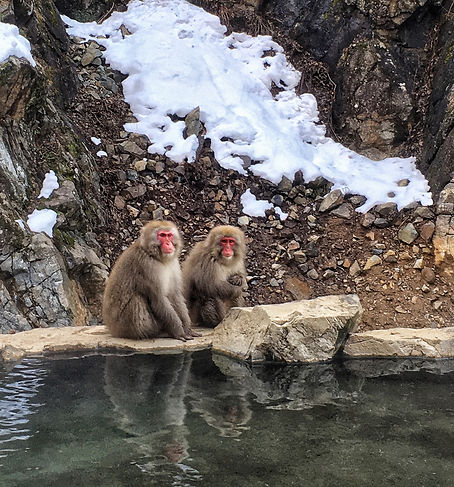Wild Animals in Japan
Japan doesn’t have many truly dangerous animals, but there are several you should be cautious of when hiking in the mountains.
The main ones include bears, hornets, wild boars, monkeys, horseflies, mountain leeches, and two venomous snakes. While encounters are rare, knowing how to handle them can make your hike safer.

-
Bears: Japan is home to both the Asian black bear and the brown bear (Only in Hokkaido). Although bear encounters are rare, they can be dangerous if provoked. To minimize the risk, make noise while hiking, clap your hands, whistle, and store food securely. If you happen to encounter a bear, remain calm, back away slowly, and avoid direct eye contact. (There is no evidence that bear bells have any effect or reduce bear encounters, clapping is louder and less annoying)
-
Hornets: The Japanese giant hornet has a painful and long lasting sting. Though not inherently aggressive, disturbing their nests can provoke these hornets to defend their territory fiercely. Stay away from their nests, and if you encounter a hornet, move slowly and maintain a safe distance.
-
Boars: Wild Boards are a common inhabitant in some areas of Japan (especially around Kobe) While boars are typically shy, they can be aggressive if they feel threatened or have piglets. Keep your distance, and if you come across a boar, calmly back away and avoid any sudden movements.
-
Monkeys: Japanese macaques are also a common sight in Japanese mountains (Konoshidaira Campground in Kamikochi for example has a big group). While most are accustomed to human presence, don't feed or interact with them. It's also a good idea to avoid eye contact if they show aggressive behavior.
-
Horseflies: During the warmer months, horseflies can be really bothersome. Protect yourself by wearing insect repellent and appropriate clothing to minimize bites. Japan has a red variety which looks a bit like a hornet and they are very big. They can be persistent and some areas have a lot of them.
-
Mountain Leeches: Rainy and warm/humid weather brings out the mountain leeches from late spring to late fall. Wearing leech socks and suitable footwear will help protect against bites. If you encounter a leech, use salt and it will come right off. Not all mountain ranges in Japan have leeches, if the mountain has them the trailhead will usually have warning signs.
-
Dangerous Snakes: Japan is home to four venomous snakes that hikers should be cautious of. Among them, the Mamushi (Japanese pit viper) stands out. While rare they can sometimes be encountered while hiking. If your going through high grass be careful to not accidentally step on one. If you plan on hiking in Okinawa, be cautious of the Habu (also a pit viper).
-
Japanese Serow: The Japanese serow is a goat-antelope species known for its remarkable climbing abilities. Kamoshika are not dangerous at all but very shy and rare, so if you do see one count yourself lucky and don't disturb it.


